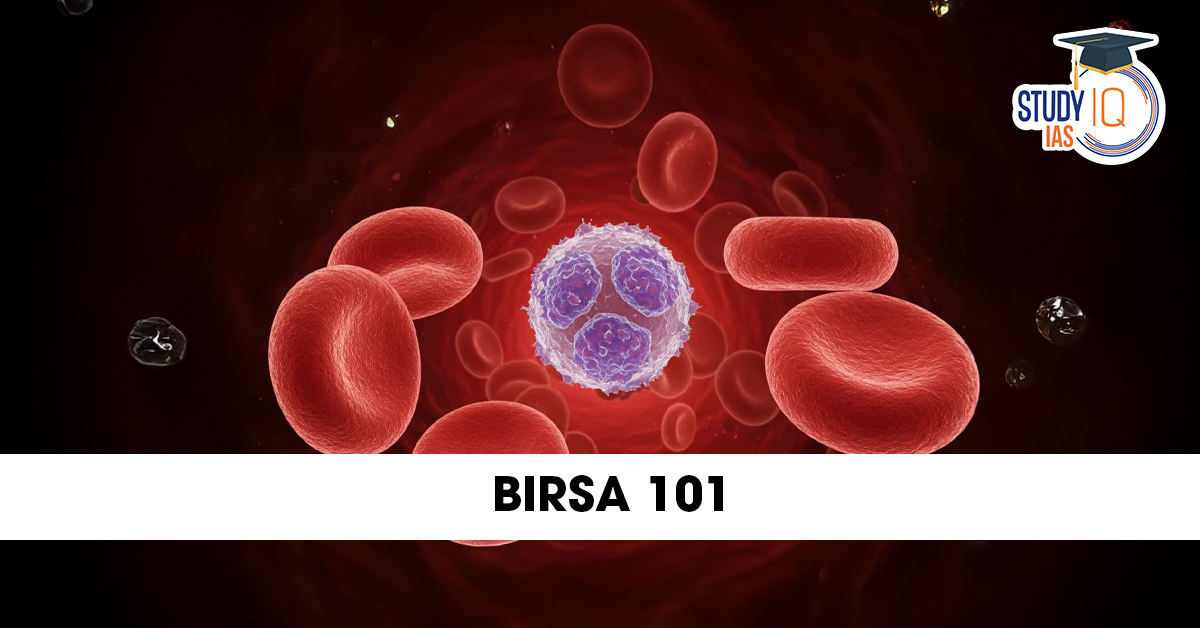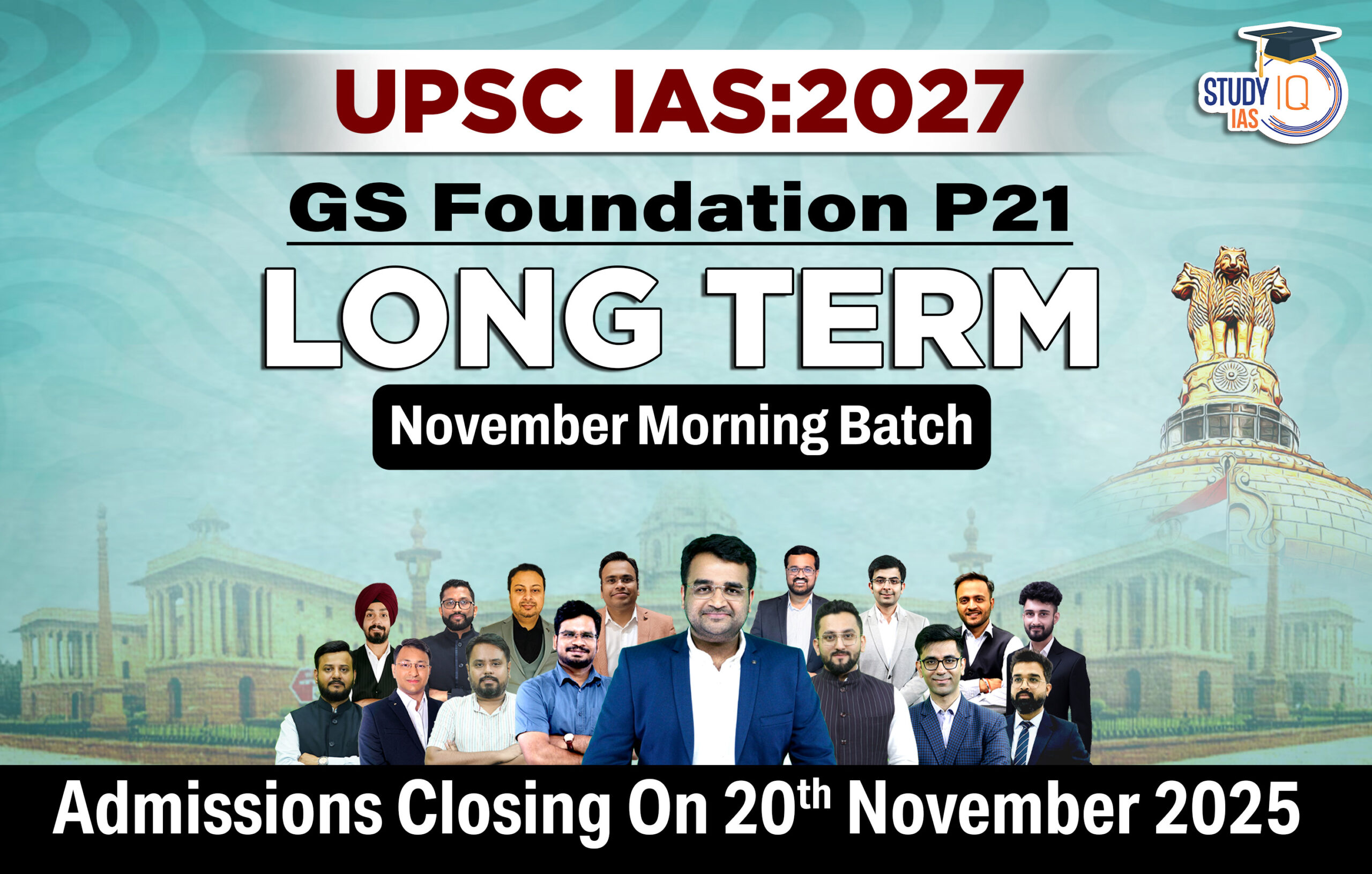Table of Contents
On 20 November 2025, India made history by launching BIRSA 101, the country’s first indigenously developed CRISPR-Cas9 gene therapy for Sickle Cell Disease (SCD). Named after the legendary tribal freedom fighter Birsa Munda on his 150th birth anniversary, this breakthrough therapy promises to transform the lives of millions of Indians, especially in tribal-dominated central and eastern states.
What is BIRSA 101?
BIRSA 101 is a one-time curative gene therapy that uses CRISPR-Cas9 technology to correct the genetic mutation responsible for sickle cell disease directly inside the patient’s body.
Developed by the CSIR-Institute of Genomics and Integrative Biology (CSIR-IGIB) in Delhi and transferred to the Serum Institute of India (SII) for large-scale manufacturing, BIRSA 101 is set to become the most affordable CRISPR-based therapy in the world.
Key Features of BIRSA 101:
- Indigenous technology – 100% developed in India
- Uses Nobel Prize-winning CRISPR-Cas9 gene editing
- Targets the root cause of sickle cell disease (mutation in the HBB gene)
- Expected to be a single-treatment cure (unlike lifelong medication)
- Priced for accessibility, especially for tribal and rural populations
Why BIRSA 101 Matters for India
Sickle cell disease affects over 1.5–2 crore Indians, with the highest prevalence among tribal communities in:
- Chhattisgarh
- Odisha
- Jharkhand
- Madhya Pradesh
- Maharashtra
- Gujarat
In some tribal groups, up to 30–40% of people carry the sickle cell gene. Patients suffer from severe pain crises, chronic anaemia, infections, stroke risk, and reduced life expectancy.
Current treatments like hydroxyurea and blood transfusions only manage symptoms. Bone marrow transplants, the only existing cure, are expensive (₹20–50 lakh) and require matched donors.
BIRSA 101 changes this equation by offering a potentially permanent cure at a fraction of global costs.
How Does CRISPR in BIRSA 101 Work?
The therapy uses CRISPR-Cas9 — described as “molecular scissors” — to precisely edit the faulty HBB gene in the patient’s hematopoietic (blood-forming) stem cells. The corrected cells are then infused back into the patient, producing normal haemoglobin and preventing red blood cells from sickling.
This same technology earned Jennifer Doudna and Emmanuelle Charpentier the 2020 Nobel Prize in Chemistry.
Globally, only two CRISPR therapies have been approved so far:
- Casgevy (USA/UK) – costs ₹15–20 crore per patient
- Lyfgenia (USA) – similarly expensive
In contrast, Indian scientists and the Serum Institute aim to bring BIRSA 101 at a dramatically lower price, in line with India’s tradition of affordable vaccines and medicines.
A Tribute to Birsa Munda and Tribal India
By naming the therapy BIRSA 101, the government has honoured Bhagwan Birsa Munda, the tribal leader who fought against colonial exploitation. The number “101” signifies going one step beyond perfection — a fitting tribute for a therapy meant to end the suffering of tribal communities who have carried the burden of sickle cell disease for generations.
Alignment with National Sickle Cell Elimination Mission
Launched in 2023, the National Sickle Cell Anaemia Elimination Mission (2023–2047) aims to screen, counsel, and eventually eliminate SCD from India. BIRSA 101 is the mission’s biggest scientific achievement to date and accelerates the goal of a Sickle-Cell-Free India by 2047.
When Will BIRSA 101 Be Available?
- Clinical trials are in advanced stages (Phase 2/3 expected completion in 2026)
- Regulatory approval from CDSCO anticipated in 2026–2027
- Roll-out likely to begin in high-prevalence states first (Chhattisgarh, Odisha, Jharkhand)
The Future of Gene Therapy in India
With BIRSA 101, India joins an elite club of nations capable of developing cutting-edge genomic medicines. This public–private partnership between CSIR-IGIB and Serum Institute of India sets a powerful model for future therapies targeting thalassemia, haemophilia, and rare genetic disorders.


 Rights of Transgender Persons in India 2...
Rights of Transgender Persons in India 2...
 Climate Change Performance Index (CCPI):...
Climate Change Performance Index (CCPI):...
 Miss Universe Winners List From 1952 to ...
Miss Universe Winners List From 1952 to ...

























